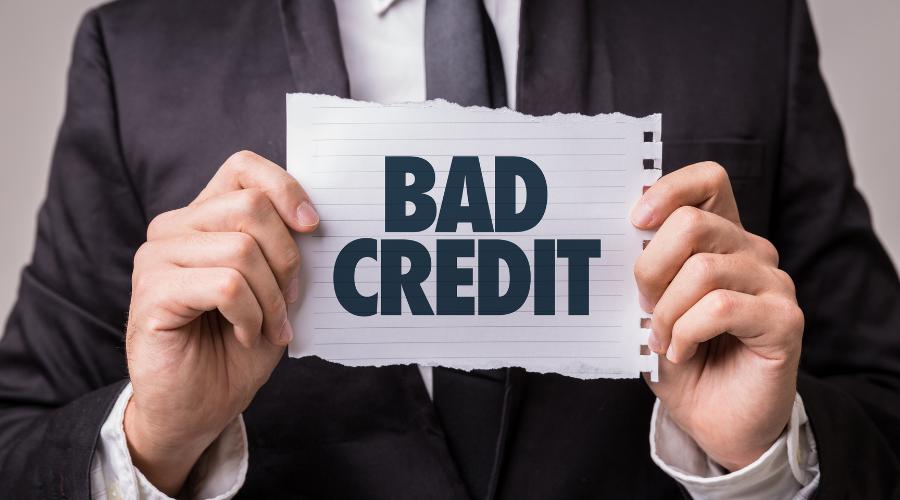As an aspiring entrepreneur, having bad credit can create significant hurdles when trying to start a business.
However, this shouldn’t discourage you from pursuing your dreams.
There are numerous ways to overcome these credit obstacles and lay the foundation for a successful business.
In this blog post, we’ll discuss 10 methods to start a business with bad credit, ensuring you have the tools and knowledge to turn your entrepreneurial vision into reality.
How to Start a Business with Bad Credit
1. Get a Co-signer
A co-signer is someone who agrees to be legally responsible for your business loan if you’re unable to repay it.
This person typically has a strong credit history and acts as a guarantor, making it easier for you to secure financing.
To find the right co-signer, consider close friends, family members, or business associates who share your passion for the business and trust in your ability to succeed.
Keep in mind that co-signing carries risks for the co-signer, as their credit could be negatively affected if the business defaults on the loan.
Make sure to have a candid conversation about the risks and benefits involved before moving forward with this arrangement.
2. Tap into Crowdfunding
Crowdfunding platforms, such as Kickstarter and Indiegogo, provide an alternative way to raise capital for your business without relying on traditional loans.
By creating a compelling campaign that resonates with your target audience, you can attract donations or pre-orders in exchange for rewards or equity in your company.
To succeed in crowdfunding, focus on crafting a powerful narrative, showcasing your product or service, and establishing a solid marketing strategy.
Don’t forget to highlight the unique selling points of your business and provide updates to keep your backers engaged.
3. Apply for Microloans
Microloans are small, short-term loans designed for startups and small businesses.
These loans can range from $500 to $50,000 and are typically offered by nonprofit organizations, community development financial institutions (CDFIs), and some banks.
The interest rates and terms may be more favorable than those of traditional loans, making microloans an attractive option for entrepreneurs with bad credit.
To improve your chances of securing a microloan, prepare a detailed business plan, demonstrate your ability to repay the loan, and highlight your industry experience.
Some popular microloan providers include Kiva, Accion, and the Small Business Administration’s (SBA) Microloan Program.
4. Utilize Peer-to-Peer Lending
Peer-to-peer (P2P) lending platforms connect borrowers directly with individual lenders, bypassing traditional financial institutions.
These platforms can offer more flexible terms and faster funding than banks, making them a viable option for entrepreneurs with bad credit.
Popular P2P lending platforms include LendingClub, Prosper, and Funding Circle.
To choose the right platform, consider factors such as interest rates, loan amounts, repayment terms, and platform fees.
Keep in mind that some platforms may require a minimum credit score, so research each platform’s requirements before applying.
5. Seek Grants and Competitions
Grants and business competitions provide funding that doesn’t need to be repaid, making them an excellent option for entrepreneurs with bad credit.
To find these opportunities, search for industry-specific grants, government-sponsored programs, and local or regional competitions.
When applying for grants or entering competitions, make sure to follow the application guidelines closely, address the evaluation criteria, and clearly articulate the impact of your business.
A well-researched and well-written proposal can significantly improve your chances of winning these funding opportunities.
6. Start a Business with a Partner
Partnering with someone who has good credit can help you secure financing for your business, as their credit score may be taken into account during the loan approval process.
Moreover, a partner can bring valuable skills, resources, and connections to the table, further increasing the chances of success for your venture.
To find the right business partner, consider your professional network, industry events, or online communities.
Look for someone who shares your vision and complements your skill set.
Once you’ve identified a potential partner, draft a clear partnership agreement outlining each party’s roles, responsibilities, and ownership stake to ensure a smooth working relationship.
7. Trade Credit and Vendor Financing
Trade credit is an arrangement in which suppliers allow you to purchase goods or services on credit, typically with short-term repayment terms.
Vendor financing, on the other hand, involves suppliers providing financing for equipment or inventory purchases.
Both options can help you establish your business without relying on traditional loans.
To negotiate favorable terms with suppliers, build strong relationships, communicate your business goals, and demonstrate your ability to repay the credit.
As you consistently pay your suppliers on time, you’ll also be building your business credit, which can improve your creditworthiness in the long run.
8. Bootstrap Your Business
Bootstrapping involves funding your business using your personal savings, revenue from early sales, or low-cost financing options.
By bootstrapping, you can retain full control of your business and avoid the need for external financing.
To successfully bootstrap your business, focus on minimizing expenses, maximizing revenue, and reinvesting profits back into the company.
Some bootstrapping strategies include launching with a minimum viable product (MVP), working from home, and leveraging free marketing channels.
Many successful businesses, such as Mailchimp and Basecamp, started by bootstrapping before scaling up.
9. Repair Your Credit
While you’re working on starting your business, take steps to improve your personal credit score, as it will play a crucial role in obtaining financing in the future. Some steps to repair your credit include:
- Reviewing your credit report for errors and disputing any inaccuracies.
- Paying your bills on time and in full.
- Reducing your credit utilization ratio by paying down debt.
- Avoiding new debt and hard credit inquiries.
- Using credit-building tools like secured credit cards or credit-builder loans.
There are numerous resources available to help with credit repair, such as credit counseling services and financial education programs.
10. Consider Alternative Business Models
If traditional business models are too capital-intensive or reliant on good credit, consider alternative models that require less upfront investment or are more forgiving of bad credit.
Examples include freelancing, consulting, or starting an online business with minimal overhead.
Evaluate the various business models based on your skills, interests, and available resources to determine which option best aligns with your goals and financial situation.
Conclusion
Although having bad credit can create challenges when starting a business, it’s crucial to remember that your entrepreneurial journey is far from over.
By exploring the 10 methods outlined in this blog post, you can secure the necessary resources and support to launch your business and achieve success.
Don’t let bad credit hold you back—embrace the opportunities available and take the first steps toward realizing your entrepreneurial dreams.








